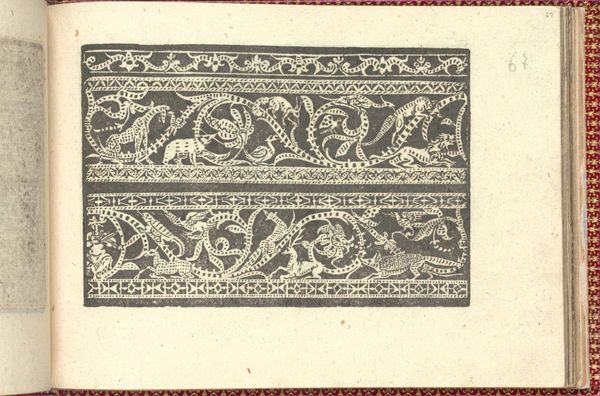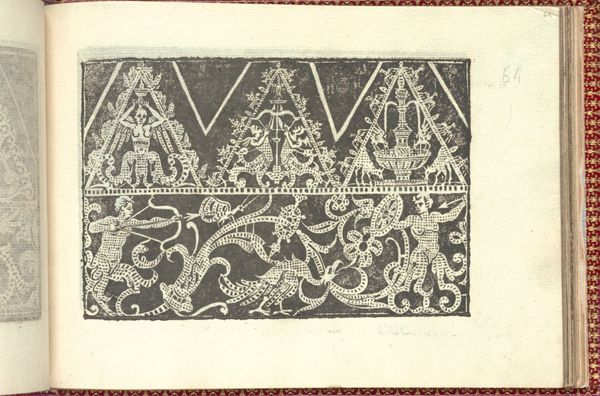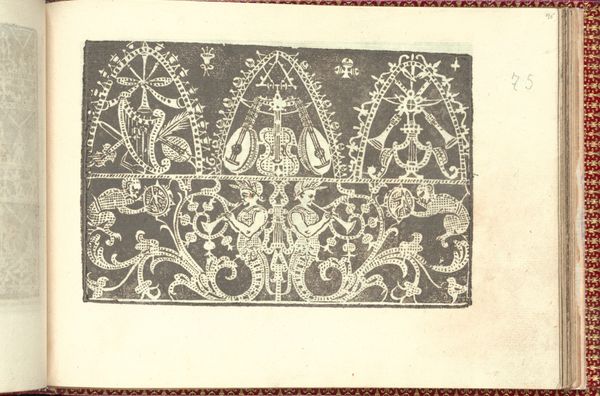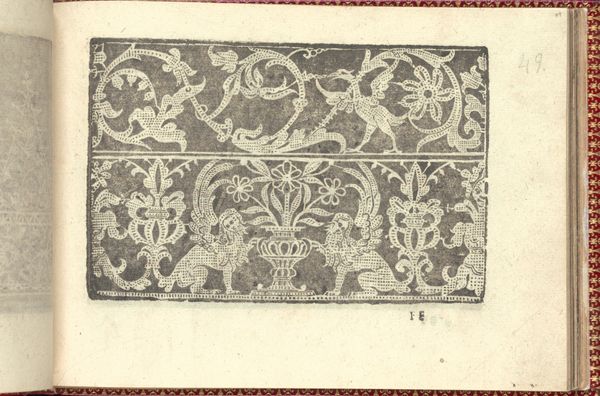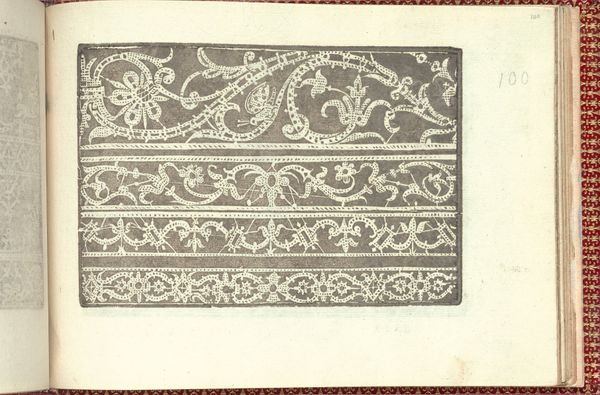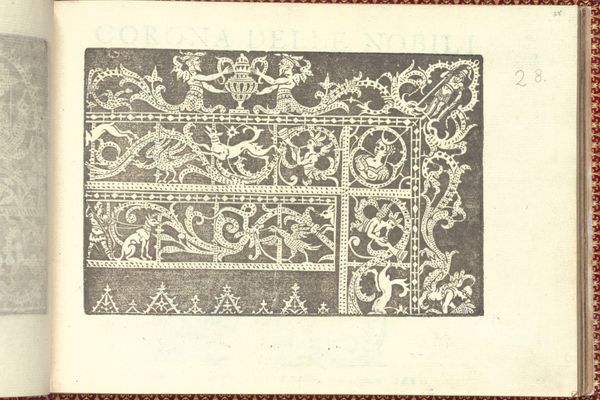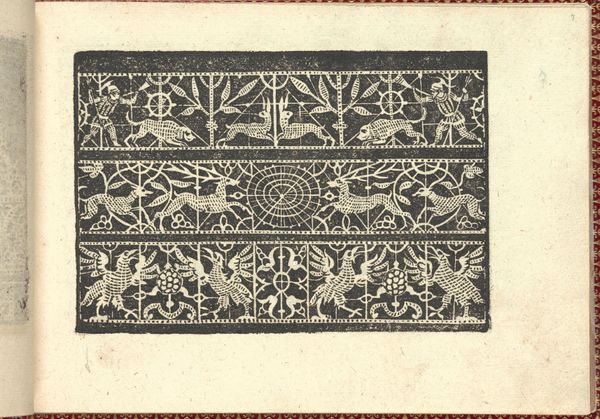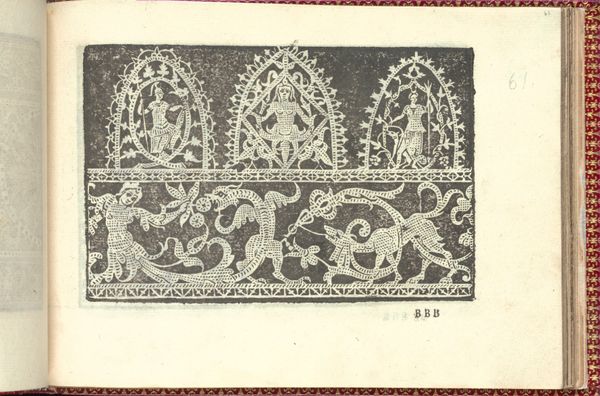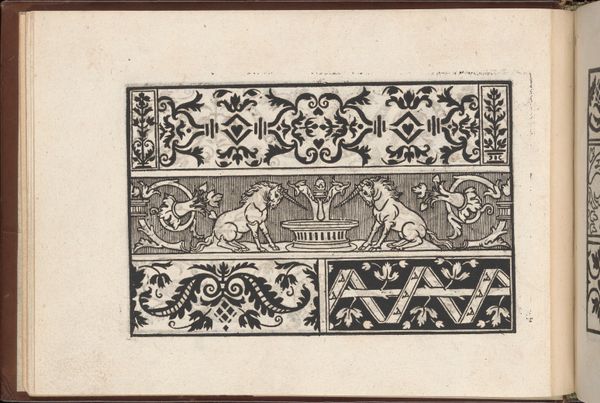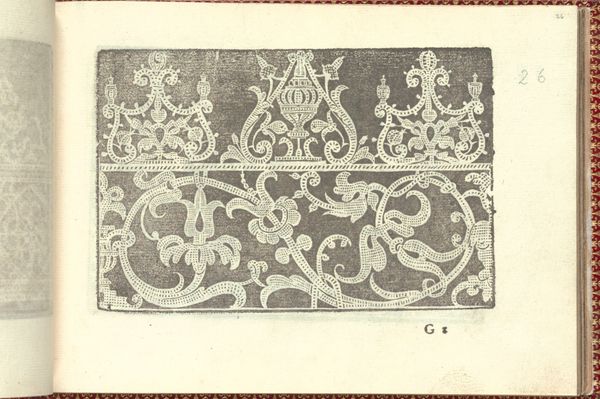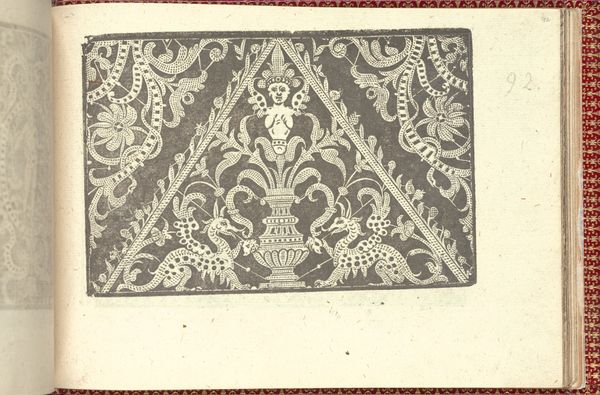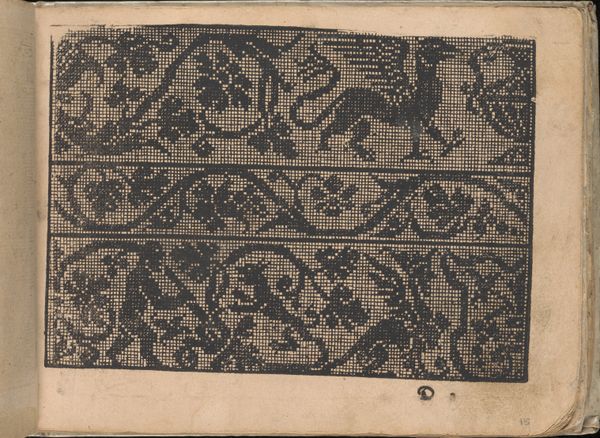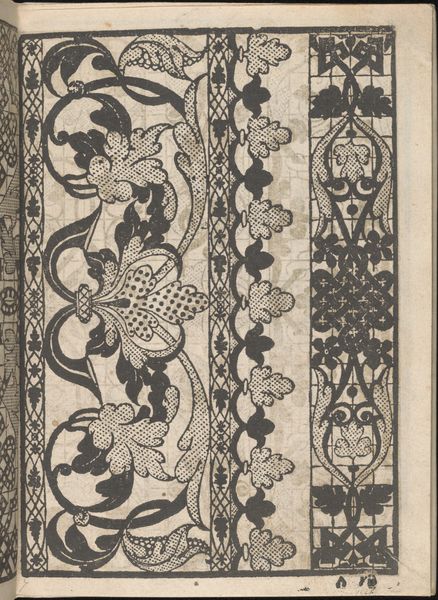
Corona delle Nobili et Virtuose Donne: Libro I-IV, page 53 (recto) 1601
0:00
0:00
drawing, print, engraving
#
drawing
#
allegory
#
pen drawing
# print
#
book
#
old engraving style
#
figuration
#
11_renaissance
#
engraving
Dimensions: Overall: 5 1/2 x 7 11/16 in. (14 x 19.5 cm)
Copyright: Public Domain
Editor: Here we have a page from Cesare Vecellio's "Corona delle Nobili et Virtuose Donne: Libro I-IV," dated 1601. It's an engraving with a distinctive black and white contrast. What's particularly interesting to me is the juxtaposition of flora and fauna within what looks like a decorative frieze. How should we interpret the making of such detailed print in the historical context? Curator: Let's consider the materials involved: the paper, the ink, and the metal plate used for the engraving. This wasn’t a solitary endeavor. Crafting such a book required collaboration – from the papermakers and ink producers to the engraver themselves, and even the publisher overseeing the entire project. This collaboration underscores a fascinating point about labor and artistic production during the Renaissance. Do you see any implications there? Editor: Well, that's really fascinating! It shows artmaking as more of a collaborative enterprise. Would the social status or roles of those involved impact our reading of the artwork’s themes? Curator: Absolutely. This book aimed to represent noble and virtuous women. So we might wonder how the material production, typically done by laborers of varying social status, shaped the representation of those from an elite group. Think of the consumption and production cycle. Wealthy patrons commissioned these items, showcasing images intended for a very different class. Who had access to this book, and what statements were being made through its consumption? Editor: So it is more than just a visual piece; the print represents social connections and class differences inherent to its creation. Curator: Exactly. By tracing the movement of materials and understanding labor processes, we can really begin to unpack the layers of meaning in Vecellio's work and see its profound connections to Renaissance society. Editor: I never thought about it this way before, the materials really are more than just components of a finished artwork, it’s a reflection of societal factors, too.
Comments
No comments
Be the first to comment and join the conversation on the ultimate creative platform.
